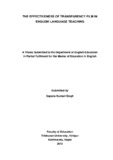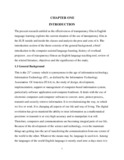Please use this identifier to cite or link to this item:
https://elibrary.tucl.edu.np/handle/123456789/1825| Title: | Noun Phrase Construction In lhomishingsaand english |
| Authors: | Bhote, Khoka Chhedar |
| Keywords: | Lhomishingsa language |
| Issue Date: | 2014 |
| Publisher: | Faculty of Education |
| Abstract: | This research work entitled ' Noun Phrase Construction ' is an attempt of toindentify the noun phrase construction in the Lhomishingsa language to findout the similarities and differences between the construction of noun phrase inLhomishingsa and English and to suggest some pedagogical implications onthe basis of the findings drawn from the study. The data were collected fromthe forty native speakers of Lhomishingsa by using questionnaires andunstructured interviews. In order to obtain required data the questionnaireswere distributed to the primary sources using the non-random judgemental andpurposive sampling procedure. The secondary sources such as books, Journals,newspapers, documents, articles, Census Report, websites and their onlineresources related to the study were also consulted. The major findings of thestudy are that Lhomishingsa language accepts the nouns, pronouns andgerundive as the essential constituent head of a noun phrase in the respectiveword position, however ,in some cases it does not agree. In the case of nounphrase construction with premodifier. The premodifier always occurs afternoun (Head) but in the case of noun phrase construction with post modifier, theost modifier always occurs before the noun (Head). The pronoun ‘rogi’ inLhomishingsa is used for both male and female. In Lhomishingsa two wordsare used to refer to the meaning of gerundive head noun phrase and–edparticiple verb as premodifier. The thesis has been into the four chapters: Introduction, Methodology, Analysisand Interpretation and Findings and Recommendation. The first Chapter dealswith introduction, general background, review of the related literature,objectives of the study, significance of the study. The second chapter containsthe methodology which is sub-chaptered asthe sources of data, population ofthe study, sampling procedure, and tools for data collection, process of datacollection and limitations of the study. Third chapter includes the analysis andinterpretation of data obtained from the field. The final or fourth chapter hasthe finding and recommendations of the study. |
| URI: | http://elibrary.tucl.edu.np/handle/123456789/1825 |
| Appears in Collections: | English Language Education |
Files in This Item:
| File | Description | Size | Format | |
|---|---|---|---|---|
| cover.pdf | 41.99 kB | Adobe PDF |  View/Open | |
| chapter.pdf | 248.88 kB | Adobe PDF |  View/Open |
Items in DSpace are protected by copyright, with all rights reserved, unless otherwise indicated.
